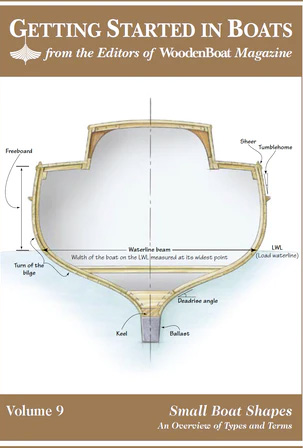When I was getting started in boatbuilding, I struggled to understand how different small-boat shapes might perform and their level of difficulty in construction. I remember feeling nearly overwhelmed by a sea of foreign words and unknown concepts. It would have been nice to have had an illustrated guide to basic small-boat shapes: hulls, bows, sterns, and some terminology that defines form. So, if you are new to boatbuilding, or if you feel unclear on some of these basic concepts, this guide is for you.
From the moment man discovered that he could traverse a river on a floating log, boat shapes have continued to evolve. Early boats took on a wide variety of forms, utilizing any available material that could be made to float. Among these craft were rafts made from inflated animal skins, bamboo, papyrus reeds, and even terra cotta pots. Later came dugout canoes, skin, wood, and bone kayaks first used by Eskimo hunters, and basket-shaped coracles (also skin boats) built in Ireland and Wales.
While boat and ship building became refined over the centuries, early designers and builders still took a Darwinian approach: If a new ship returned from her maiden voyage, she might be copied and built again. If she failed to return, well, then she might not be reproduced.
We still haven’t conquered the sea, and I doubt that we ever will. However, we do have more tools at our disposal to help us build boats that are safer to use and perform better. Hours spent on construction represent only a fraction of time in the life of a small wooden boat. It isn’t difficult to grasp the utility of basic small-boat shapes, and it will be helpful to know something about them when choosing a boatbuilding project.
Please remember that this is an article about small-boat shapes, not small-boat design. While some overlapping concepts are mentioned here, we will not cover even the rudiments of what it takes to create a lines drawing. If this piece whets your appetite for learning something about small-boat design, then I encourage you to read Harry Bryan’s article on the subject in WB No.196, page 44, and to consider the titles provided at the conclusion.

The Origins of Hull Shapes
Hull shapes (in section) are made up of some combination of three basic forms. These are: flat-bottomed, V-bottomed, and round-bottomed.

